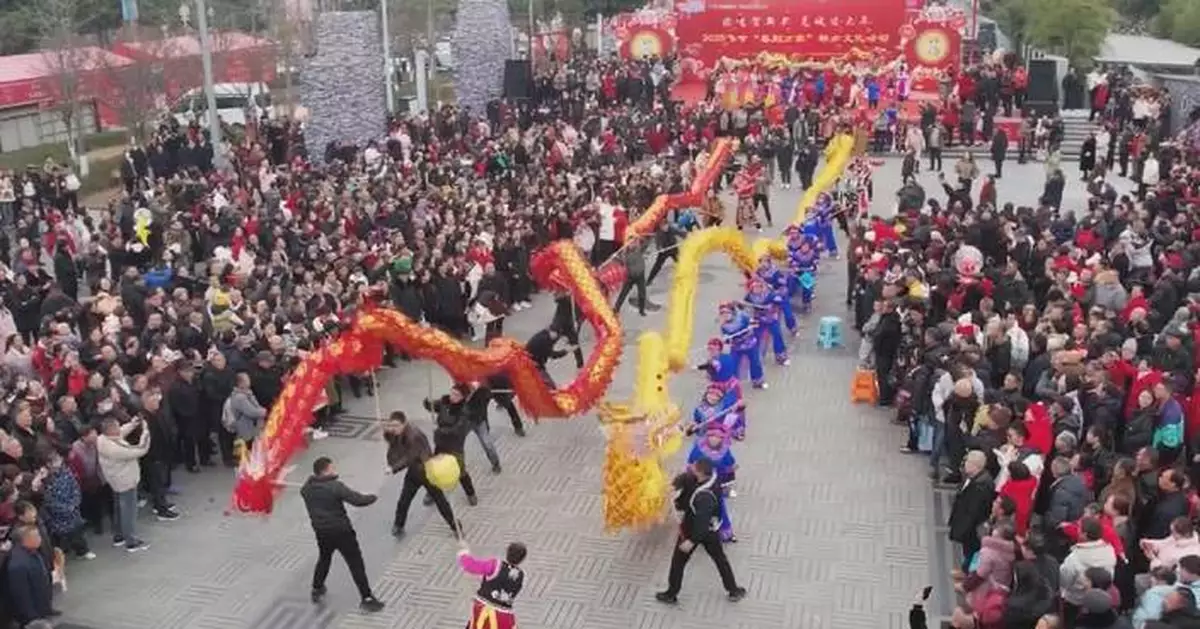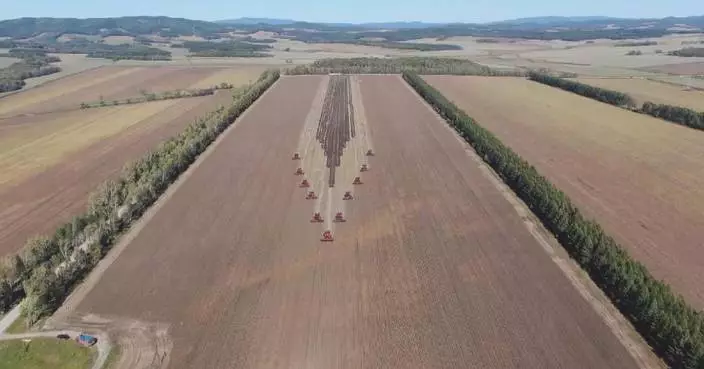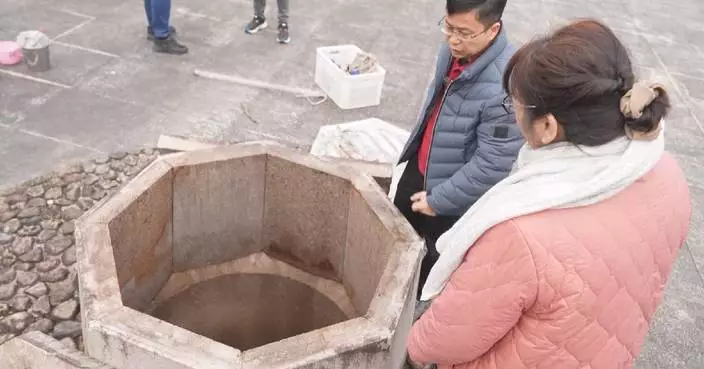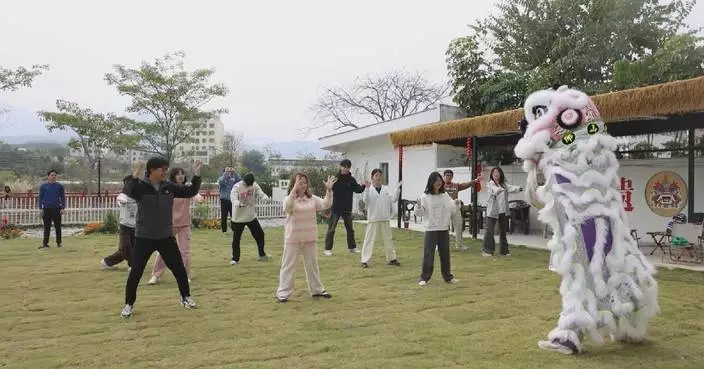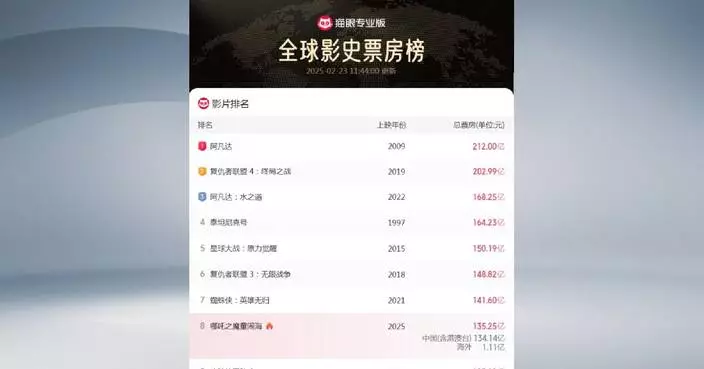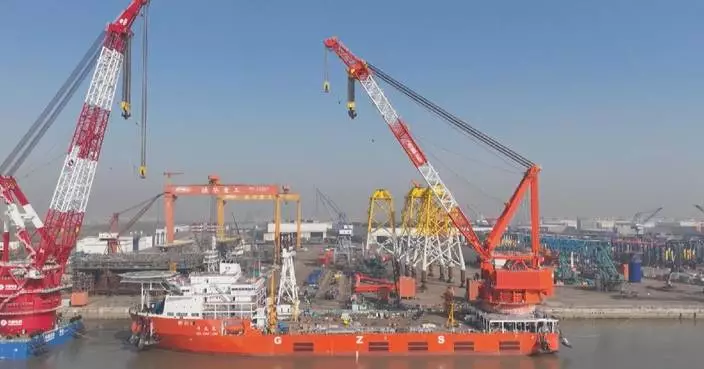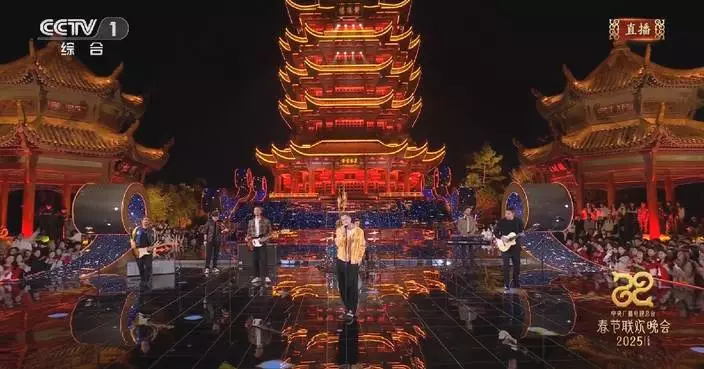Various celebrations were held in southwest China's Sichuan Province and east China's Anhui Province on Wednesday to mark the start of the 2025 Chinese New Year, featuring ethnic parade performances, fairs and traditional long table feasts.
The Spring Festival, which marks the start of the Chinese New Year, fell on Jan 29 this year, ushering in a Year of the Snake. It is also the first Spring Festival since the United Nations Educational, Scientific and Cultural Organization (UNESCO) inscribed the Spring Festival, social practices of the Chinese people in celebration of the traditional new year, on the Representative List of the Intangible Cultural Heritage of Humanity in December 2024.
On Wednesday, the first day of the Chinese New Year, a spectacular parade consisting of 100 dancing dragons and lions was held at the Beichuan Qiangcheng tourist area in Mianyang, a major city in Sichuan.
Dragon and lion dance teams from different townships gathered for the performance. Dancers in vibrant ethnic Qiang-styled costumes performed the sheepskin drum dance, blending unique ethnic characteristics with the bustling dragon and lion performances, sparking a unique charm.
"We exert all efforts to bring our traditional culture to everyone. The dragon and lion symbolize good fortune. Wish us good luck and prosperity in the Year of the Snake," said Zhang Rong, one of the performers.
At the Jiezi ancient town in Sichuan's capital city of Chengdu, long tables were set up along the 280-meter ancient street, where locals and tourists shared delicious food and celebrated the arrival of the Chinese New Year together.
Apart from the feast, a fair featuring intangible culture heritages was held at the ancient town, showcasing captivating performances like face-changing performance in the Sichuan opera and dragon dances.
At the Xihe ancient town in Wuhu, a city in Anhui Province, a dragon lantern parade was held to usher in the Chinese New Year. The performers roamed the streets, extending blessings to every household amid joyful drumbeats.
The spectacular dragon lantern parade, composed of 37 individual lantern sets and extending approximately 110 meters, was led by a towering dragon head measuring more than two meters high, winding through the ancient town.

Various traditional New Year celebrations held in southwest China's Sichuan, east China's Anhui
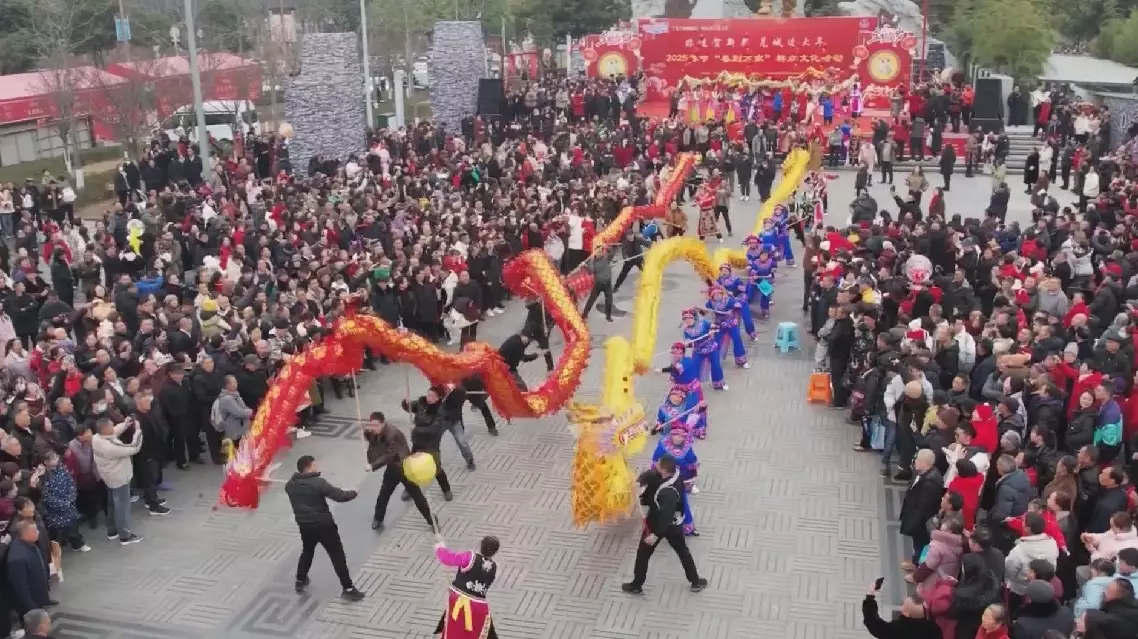
Various traditional New Year celebrations held in southwest China's Sichuan, east China's Anhui
China's ice and snow tourism has experienced booming growth during the 40-day Spring Festival travel rush which just concluded on Saturday.
Data from Tongcheng Travel, an online travel service provider, shows that hotel bookings surged by over 40 percent year on year in many popular winter tourism destinations in northern China, including Altay and Yili in northwest China's Xinjiang, Qitaihe in northeast China's Heilongjiang and Xilingol League in north China's Inner Mongolia.
The ice and snow fervor fueled by the Asian Winter Games, which were held in the "Ice City" of Harbin from February 7 to 14, has spurred economic growth and boosted tourism in the city and surrounding areas. As a result, domestic flight bookings for Harbin increased by over 20 percent year on year. Hotel bookings in the city rose by about 60 percent compared to the same period last year. Meanwhile, the total number of inbound tourists has seen a year-on-year increase of over 144 percent.
In addition to the northern regions which are traditionally winter tourist destinations, many places in the south are also seeing growing popularity for winter activities. The search volumes of ice and snow-related consumption more than doubled in places like Shanghai, Zhejiang and Guangdong, according to data from Tongcheng Travel.
"The number of tourists had increased about 30 percent during the Spring Festival, compared to the same period last year," said Zhou Daochun, an employee of a ski resort in Zhejiang Province.
China's railway system had taken measures to deal with the ice and snow travel boom during this year’s Spring Festival travel rush with additional trains being operated between popular winter tourism destinations.
Meanwhile, local railway systems also cooperated with transportation authorities to open special trains that could carry tourists to experience winter sports and events, achieving seamless transfer among railway stations, bus stops and ski resorts.
In response to the surge in tourists heading to have fun with ice and snow in Shangri-La of southwest China's Yunnan province, local railway authorities operated special tourist trains that stopped in popular cities within the province, including Xishuangbanna, Kunming, and Dali. The trains then continued to Lijiang, where tourists could board a high-speed train that would take them directly to Shangri-La.
Xiamen in east China's Fujian opened an ice and snow-themed train to Harbin for the first time. The local railway station also launched tailored services for certain tourists to ensure their safe and smooth travel.
"We set up a designated area for tourist groups in the railway station's waiting area and assigned special personnel to help senior tourists, providing warm and secure services to ensure their comfort and safety," said Wu Zhenbin, staff working at the Xiamen North Railway Station.

China sees booming winter tourism during Spring Festival travel rush




